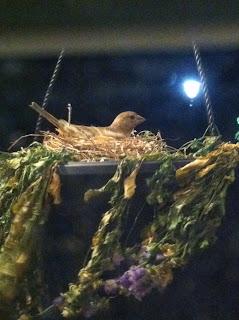Buyer be informed this spring! When you're at the local garden store or nursery I want to make sure you go in armed with knowledge about what I think may be one of those most mis-labeled herbs.
There are several plants that can be and are labeled "Tarragon." You'll want to be familiar with a few tidbits of information to determine exactly which of these plants you're buying.
FRENCH TARRAGON (Artemisia dracunculus)
This is considered by most to be the "genuine" culinary herb and is most likely the Tarragon plant you're hoping to plant in you're garden.
It is a perennial herb which grows in partial sun and requires well drained soil. The reason French Tarragon is hard to find and often substituted for is because it very rarely goes to seed. The most common way of growing new Tarragon plant is through propagation from cuttings in the spring. The plant has woody stems with thin blue-green leaves
The best way to determine if the plant is french tarragon is through a taste test. Take a leaf off the Tarragon plant and taste it. If it is genuine French Tarragon it will have an anise flavor and a strong "tongue numbing" effect.
 |
| My young French Tarragon plant from a local farm |
RUSSIAN TARRAGON (Artemisa Dracunculoides)
The largest impostor to French Tarragon is Russian Tarragon. It is in the same family as French Tarragon so this is why it is often substituted. Russian Tarragon CAN be grown from seed. So if you're looking at a seed catalog and it lists Tarragon, you can bet the $2 the seed packet costs that it is Russian Tarragon.
If you're at the nursery doing the taste test, Russian tarragon will have similar anise flavor but it will be much more subtle and the "tongue numbing" effect will be minimal.
SPANISH TARRAGON - WINTER TARRAGON - TEXAS TARRAGON - MEXICAN TARRAGON (Tagetes Lucida)
When searching for Tarragon plants you may also encounter plants labeled as Spanish, Winter, Texas or Mexican Tarragon. These are all the same plant in the Marigold family. The plant is also often used as a substitute for French Tarragon, it grows better in humid climates. However, it lacks the "bite" of French Tarragon
So the morale of this story is "Buyer be Informed" Make sure you're buying what you are paying for. All of these plants are wonderful to grow and use, just make sure you're getting what you're hoping for.
Do you have any favorite uses or recipes for Tarragon?











